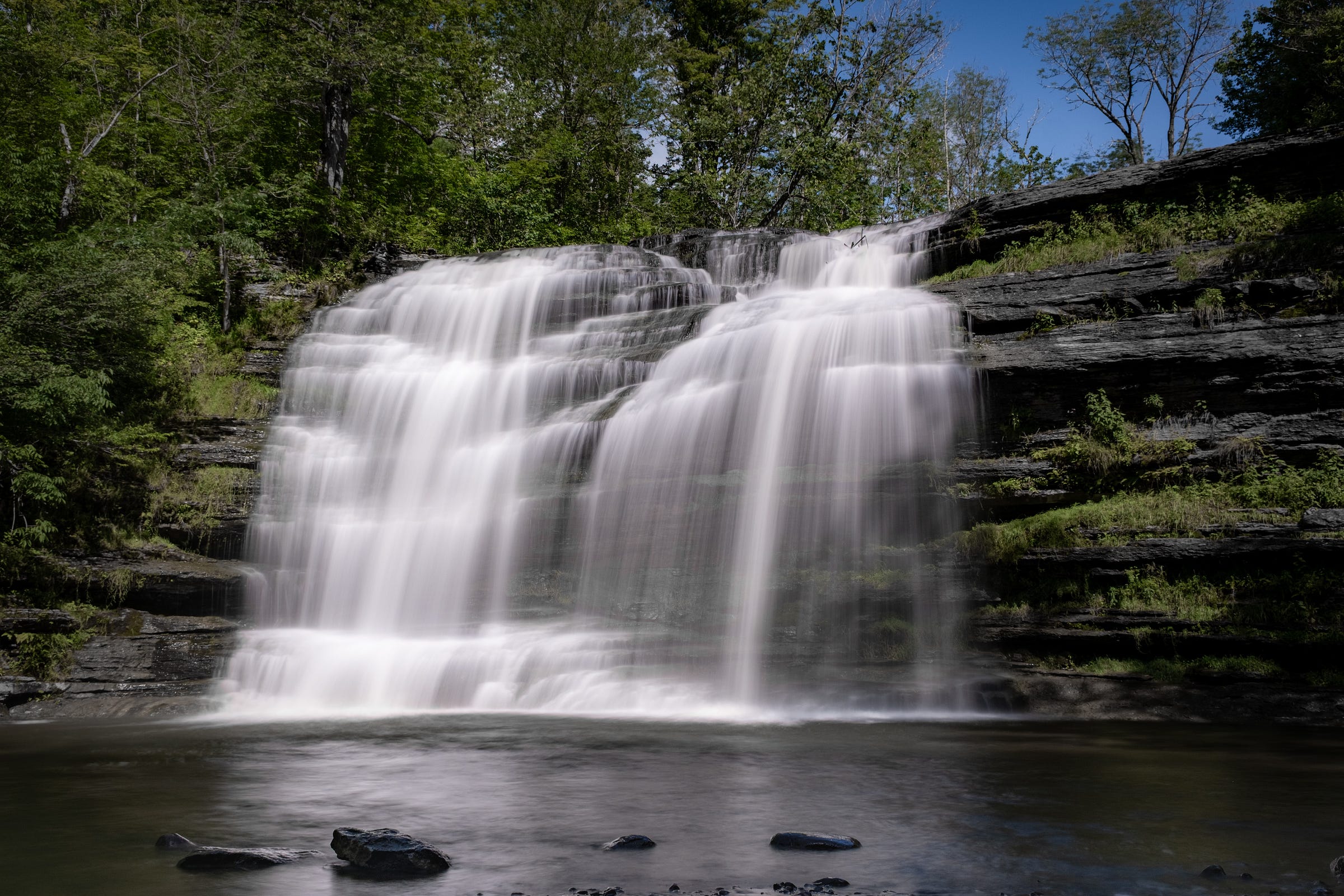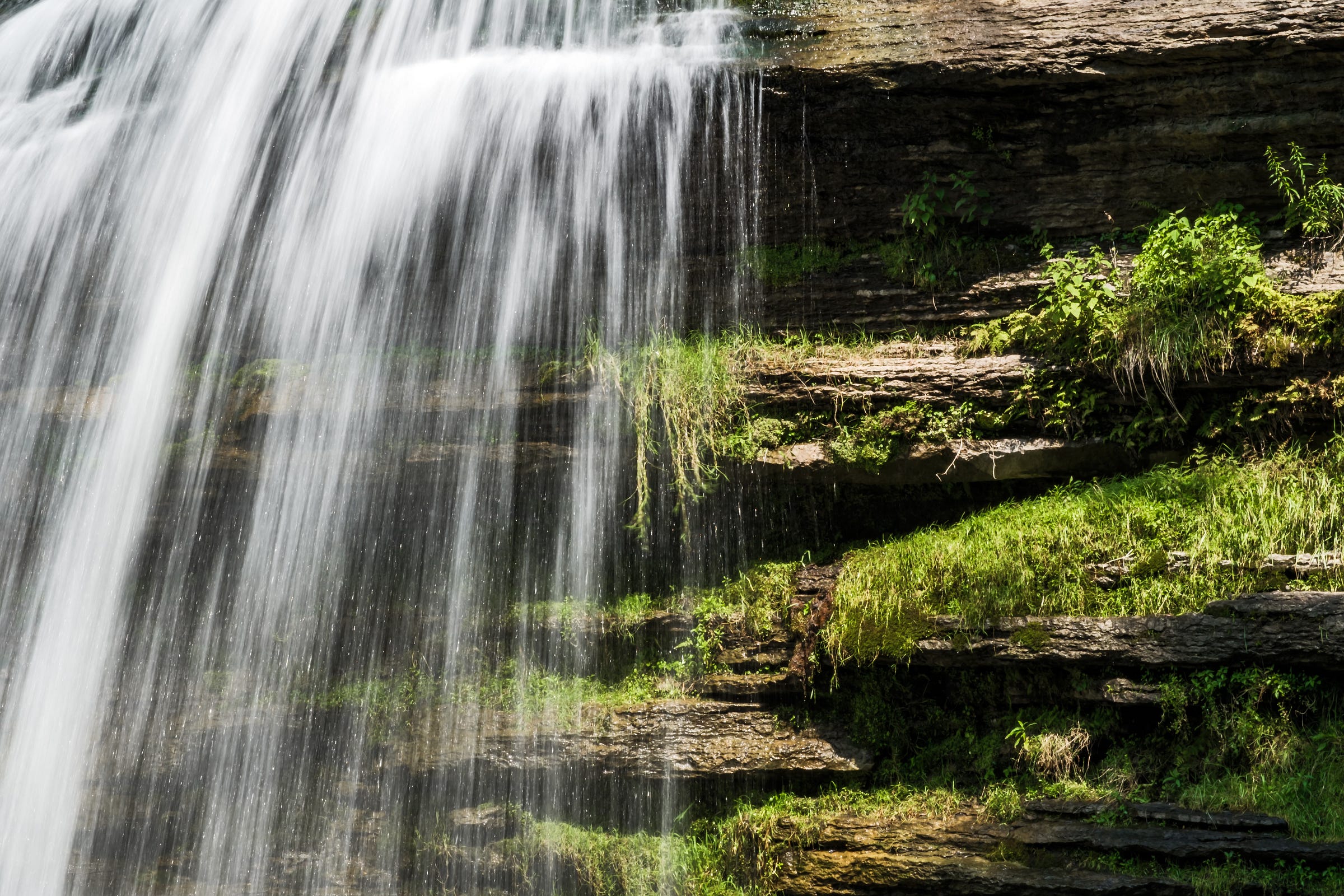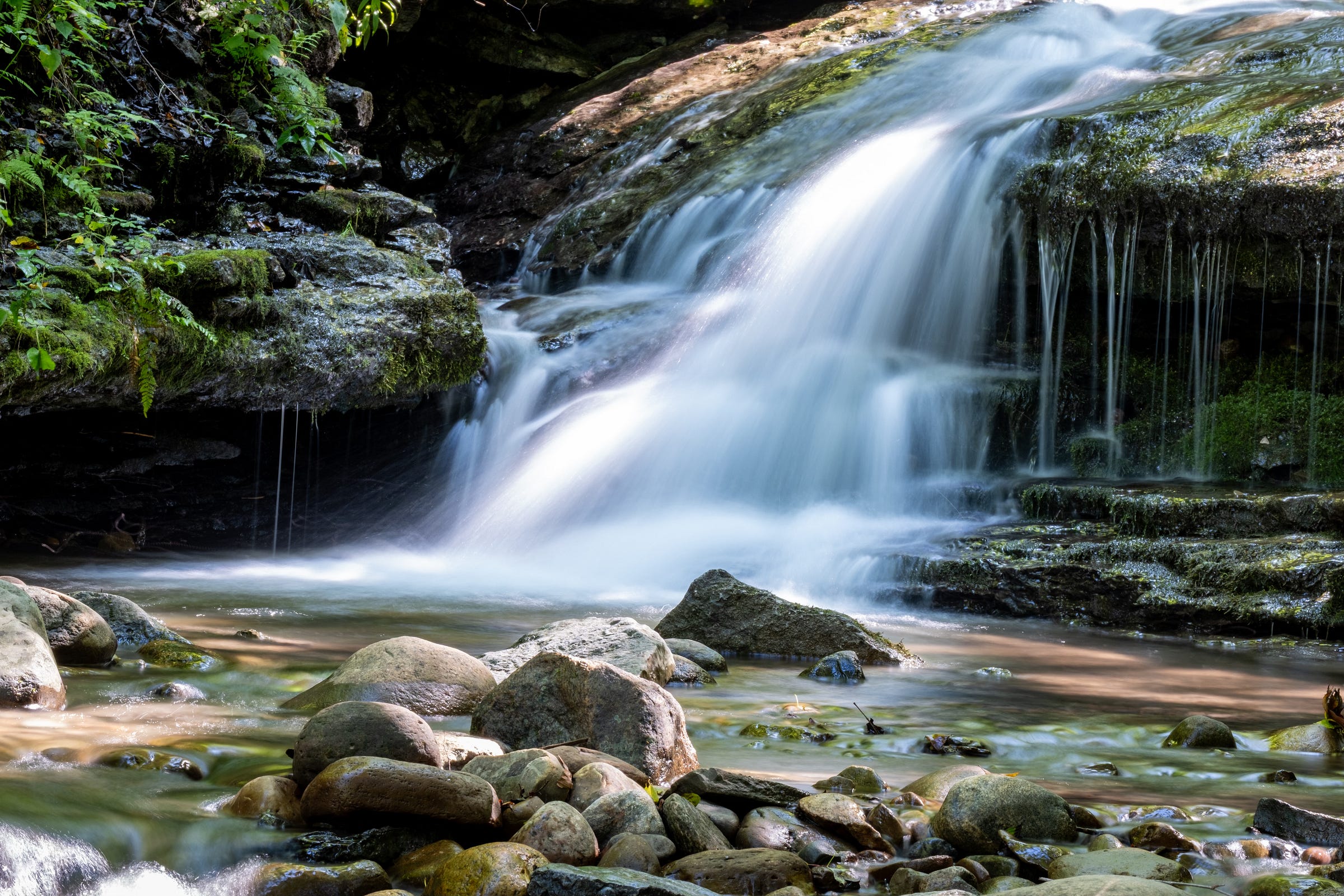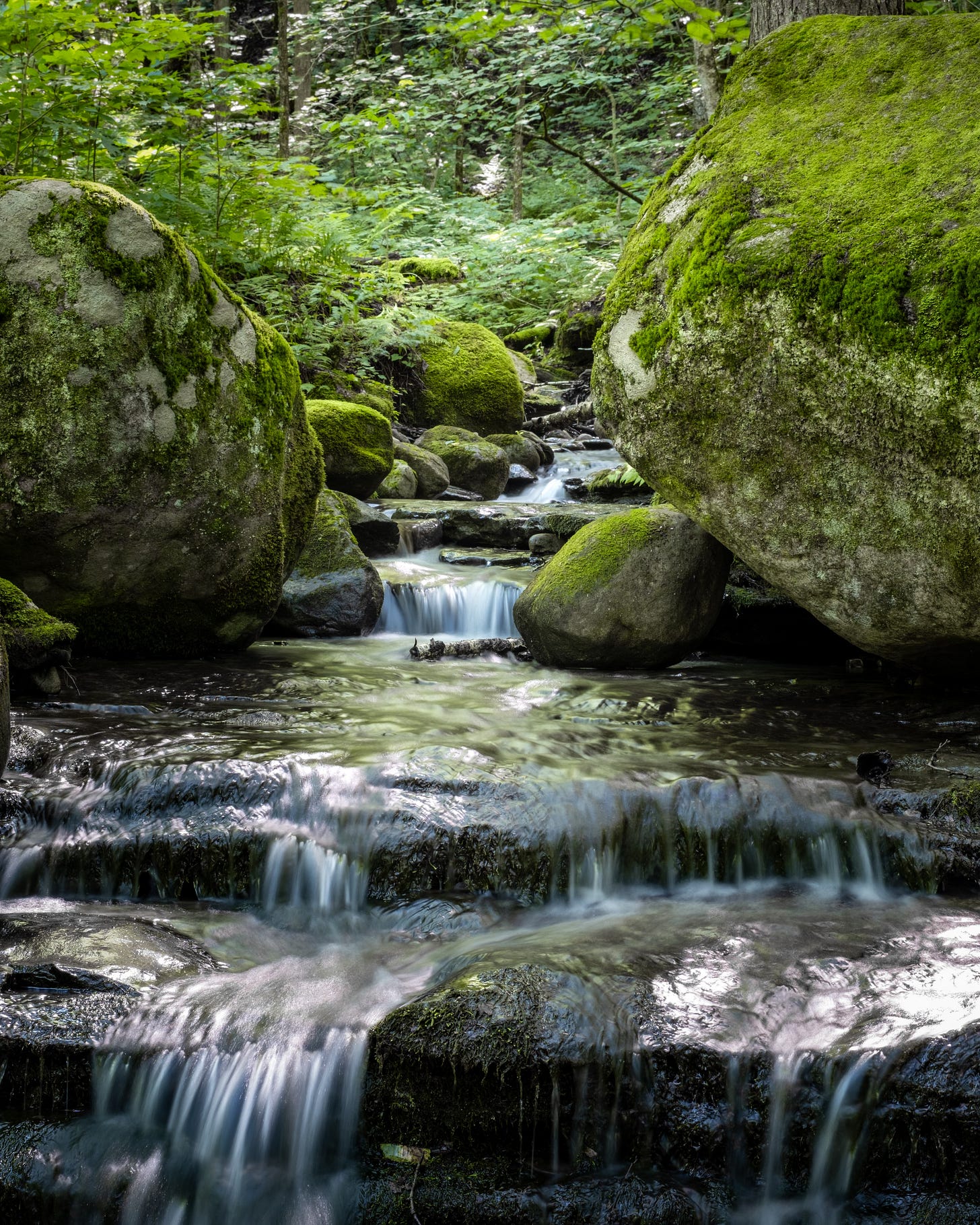View Through the Lens: Storytelling with Focal Length at Pixley Falls
Photography isn’t just capturing what you see — it’s conveying what you feel. At Pixley Falls, focal length helps shape the story you tell.
When you arrive at Pixley Falls State Park in upstate New York, you hear the water before you see it. A low, steady rumble filters through the trees as you descend the narrow, shaded trail toward the Lansing Kill.
The main waterfall is what draws people in. But slow down, and the story broadens — smaller feeder streams trickle through mossy rocks, fallen trees lie crisscrossed in the forest, and the cool air thickens with the scent of damp earth and stone. What mood does this place have?
Photography gives us the power to tell our version of what we find.
And focal length — the lens we choose — shapes how that story unfolds.
Wide Angle: Setting the Scene
What’s included in the frame with a wide-angle view?
At Pixley, you need a wider view to show the larger waterfall. You can include the river, the falls. You can show the bigger picture. Establish where you are and what you came to see.
Using a wide-angle lens, or shooting from a distance, can give you the wide view you are looking for.

But it also flattens the experience — everything is shown at once. The mystery lies in the details.
Zoomed In: Finding Texture and Motion
Switching to a longer lens changes the story. Now, it's not about "the falls" — it's about water threading over mossy stone, the rush of movement against stillness. Woodlands can often be messy and full of distractions, making images harder to find. A tighter zoom, or moving in closer, gives you the ability to exclude distractions and highlight details of the scene that tell the story you want to capture.

It’s a different side of the same place — a smaller, more intimate chapter.
Small Worlds: Removing Scale and Distractions
In a small feeder stream, a tiny waterfall slips over the rocks — no bigger than a few feet. But by zooming in tightly and excluding context, the photo suggests something much larger, hidden, and timeless.

Photography lets us shape not just what we see — but how others feel it.
Behind the Scenes: Choosing What to Leave Out
The real scene is messier: dead trees, cluttered ground, distractions everywhere. A wider view shows it — but careful framing lets you cut through the chaos.
Focal length becomes a storytelling tool: it helps you decide what deserves attention and what does not.
Details in Focus: Curating with Mid-Range Lenses
Elsewhere along the trail, I used a medium telephoto (around 60mm) to frame some of the other feeder streams with interesting moss and rocks, focusing the story on color, simplicity, and flow.

Closing Thought
The lens you choose isn't just about magnification — it’s about meaning.
A wide lens tells the story of place.
A telephoto tells the story of feeling.
Your eyes — and your heart — decide which matters most.
Next time you're out, slow down.
Listen. Breathe it in.
Then use your lens to tell the story only you can see. Do you have a preferred lens for woodland photography?



